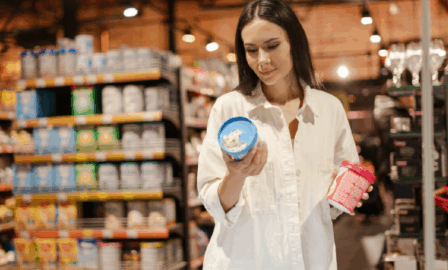Leveraging Lab Informatics in the Wine and Spirits Industry
The industry of wine and spirits is changing rapidly. There are many factors impacting this transformation, including product evolution, such as the shift to lower alcohol by volume (ABV) products, and relaxed state liquor laws. This dynamic, competitive industry requires maintaining product quality while innovating new product development, adhering to stringent regulations, and optimizing operational efficiency.
The increased need for efficiency, productivity, transparency, and sustainability is guiding the industry toward digitalization, making Laboratory Informatics platforms indispensable in this sector. In this article, we will look at four key areas where laboratory informatics can be leveraged and how it can aid in the success of a business in the wine and spirits industry.
Leveraging Lab Informatics in Wine & Spirits
1. Quality Control
The endless different choices of brands make the industry highly competitive; therefore, individual batches of products must be consistent. Quality control (QC) is a crucial aspect of the wine and spirits industry because it ensures safe consumption, consistent sensory experiences, and customer satisfaction.
Laboratory informatics play a pivotal role in centralizing data. Data stored in a Laboratory Information Management System (LIMS) allows for efficient extraction of test results, specification limits, and reporting. A LIMS can be used to automate workflows, ensuring processes are repeatable and reliable every time. Adding interfacing and integration to other systems and instruments adds another layer of quality and efficiency by having automated communication between systems, removing the need for human transcription.
2. Regulatory Compliance
Regulations for this industry are complex in the United States because organizations must follow both state and federal guidance due to age restrictions and tax structure. The U.S. Food and Drug Administration (FDA), along with the Alcohol and Tobacco Tax Trade Bureau (TTB), ensures the safety, proper labeling, and integrity of alcohol products. The TBB also strictly qualifies organizations before they are permitted to enter the industry. Failure to comply with these regulations can lead to severe consequences, including fines, revoked licenses, damaged brand reputations, and potential legal fees.
Laboratory informatics offers robust solutions to facilitate compliance. By standardizing workflows and tracking lab samples and tasks through the laboratory with audit trails, data integrity is maintained. Laboratory informatics helps to also adhere to industry GLP, GMP, and ISO standards to ensure regulatory compliance is followed.
3. Research and Development Advancements
Innovation is vital for staying ahead in the competitive alcoholic beverage market. Non-alcoholic blends of juices or sodas – or mocktails – are rapidly gaining popularity; therefore, some producers are challenged to keep the same flavor profiles as their alcoholic counterparts, while adapting to a zero to low ABV.
Laboratory informatics can substantially aid in research and development (R&D) efforts by facilitating data-driven experimentation, analysis, and formulation. Experiment data can be easily searchable and accessible by using an Electronic Laboratory Notebook (ELN), minimizing the effort in finding previous analyses and outcomes. Coupling an ELN with a LIMS, and adding automation, can drastically increase the innovation timeline to get new products on the market to meet industry demands.
4. Data Analysis and Predictive Analytics
Laboratory informatics platforms are investing in the Lab of the Future technologies, such as Artificial Intelligence (AI), Advanced Analytics, and Business Intelligence (BI), opening the ability for real-time analysis of vast amounts of data to identify patterns, trends, and potential anomalies that a laboratory informatics platform can capture. This knowledge empowers producers to make informed decisions about yield optimization, quality improvements, and cost reductions, fostering continuous improvement throughout the production process. While producers must still be mindful of seasonal weather conditions – like severe drought or cold temperatures – that might disrupt those predictions, having this data analysis readily available greatly improves the accuracy of those decisions.
Looking Ahead
The wine and spirits industry faces numerous challenges, from maintaining quality, to complying with regulations, to meeting customer expectations. Leveraging a laboratory informatics platform addresses these challenges head-on, providing producers with an integrated and efficient solution for data management, traceability, and compliance. By embracing laboratory informatics technology, wine and spirits producers can elevate their operations, ensuring consistent product excellence, regulatory adherence, and consumer satisfaction in this ever-evolving industry.
As Laboratory Informatics continues to evolve, its usage will undoubtedly extend further, driving innovation and success for the wine and spirits industry. Contact Clarkston on how we can help with your LIMS and Laboratory Informatics journey.



